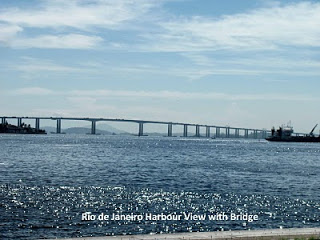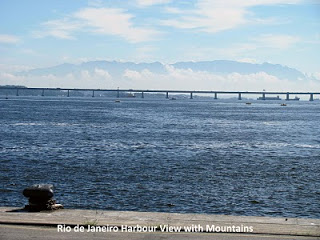And the work was superb, and since this is my personal blog, I won’t go into detail about the excellence of the conference and the continuing high quality of the presentations, meetings, focus groups, knowledge networking opportunities, and all those other elements that lure us to professional conferences. It was a privilege to be amongst such dedicated and knowledgeable people – all willing to speak freely and frankly about the subject of sustainable urbanization – and the consultancy assignment was considerably enhanced by being able to meet with and interact with so many leaders in the field (a brief description is at the SMR blog and the official World Urban Forum site has much information about the conference).
Rio’s not like that now. For Mr. Guy, it was an extremely unusual business trip. For one thing, I had not reckoned on the heat. How all those business executives (and security guards) manage in their black suits all day long is a mystery to me. I showed up the first day in my usual management consultant’s suit-and-tie and found myself immediately drenched to the skin.
The signs are everywhere. Rio is not a clean city, and it is surprising after being in other large cities to see the extent of dirt, leftover construction materials, and falling-down construction sites and deserted structures just littering the place up. Graffiti is everywhere, simply everywhere, and to think about what’s happening to the city as you ride along (admittedly in your air-conditioned taxi, safe from having to be part of the rough edges of city life) is to realize that if something is not done to reduce the inequality in urban society, it’s just hard to tell what the future is going to be like.
The distant conference venue was (despite the bleakness of other parts of the city) an example of how a major city is trying to do what it can. All along the harbor are these huge warehouse, left over I suppose from the great days of commercial shipping and probably dating – one would guess – from in the early part of the last century. Deserted for a long time, the warehouses are now part of Rio de Janeiro’s campaign to “re-birth” itself and to that end, a massive effort has been put into turning the six long warehouses – stretched out along the harborside – into a world-class convention center. It’s not there yet, but the signs are there, and given a few more years, a collection of innovative
So despite the heat and the sad prospect of what could be seen in other neighborhoods, the beauty of the harbor is readily apparent (and the harbor was the subject of the only photographs I was able to take, beyond some taken at the conference itself – plenty of other images of Rio de Janeiro are available particularly here).
The conference was hosted by the Brazilian government, and it was obvious the country’s and the city’s leaders were very pleased to be able to offer Brazilian hospitality to conference attendees, and we were all thankful to them – and to UN-HABITAT’s conference planners – for doing such a fine job.


Leave a Reply